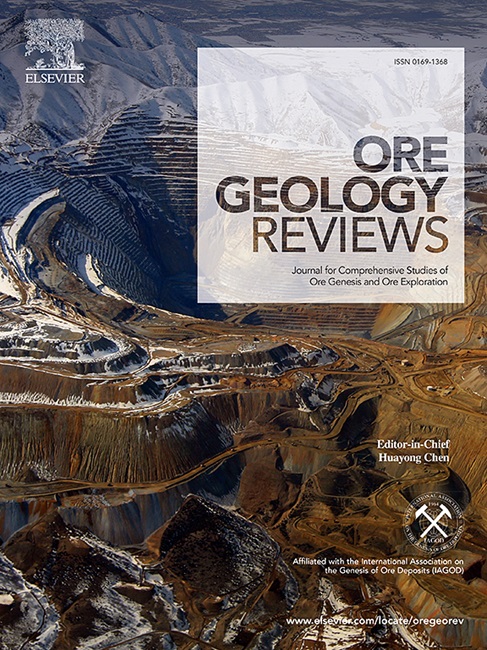Reply to Comment on “Baddeleyite U-Pb age and Hf isotopes, and constraints on genesis of the Panzhihua carbonatite in SW China” by Arndt, Ganino and Li
IF 3.2
2区 地球科学
Q1 GEOLOGY
引用次数: 0
Abstract
The calcareous rocks adjacent to the Panzhihua intrusion were considered as carbonatite rather than marbles/skarns based on detailed field mapping and profile survey. Arndt et al. (2023) presented data and figures to compare the difference of trace elements of carbonatite between Panzhihua (they called “dolomite” or “marble”) and other areas in the world and maintained their genesis interpretation. However, carbonatite and carbonate can’t be well distinguished by the trace elements and Hf isotope, because that only approximately 20 % occurrences of global carbonatites contain high contents of rare earth elements. The mineral composition, major element, Ni (avg. 1011.91 ppm), Cr (avg. 1762.73 ppm), and ∑PGE (avg. 12.95 ppm) contents of the dark ultramafic enclaves hosted in the white calcareous rocks indicate that they are mantle-derived xenoliths rather than dolerite (or gabbro and diabase) or metamorphosed peridotite. The large number of mantle xenoliths also implies that their surrounding rock is more likely to be mantle-derived magmatic rock (i.e. carbonatite) rather than skarn. Furthermore, from melanocratic xenolith core and leucocratic surrounding carbonatite to middle zebra rocks, only physical rather than chemical change (i.e. contact metamorphism) happened due to without obvious mineral composition variation.

求助全文
约1分钟内获得全文
求助全文
来源期刊

Ore Geology Reviews
地学-地质学
CiteScore
6.50
自引率
27.30%
发文量
546
审稿时长
22.9 weeks
期刊介绍:
Ore Geology Reviews aims to familiarize all earth scientists with recent advances in a number of interconnected disciplines related to the study of, and search for, ore deposits. The reviews range from brief to longer contributions, but the journal preferentially publishes manuscripts that fill the niche between the commonly shorter journal articles and the comprehensive book coverages, and thus has a special appeal to many authors and readers.
 求助内容:
求助内容: 应助结果提醒方式:
应助结果提醒方式:


